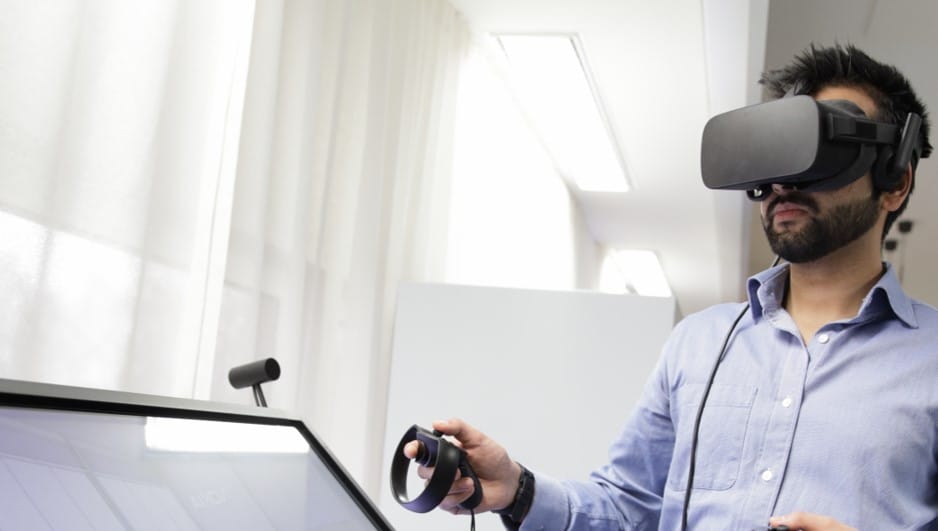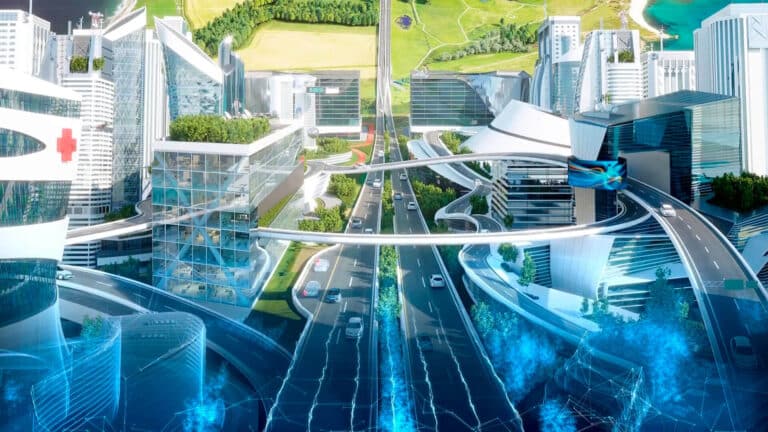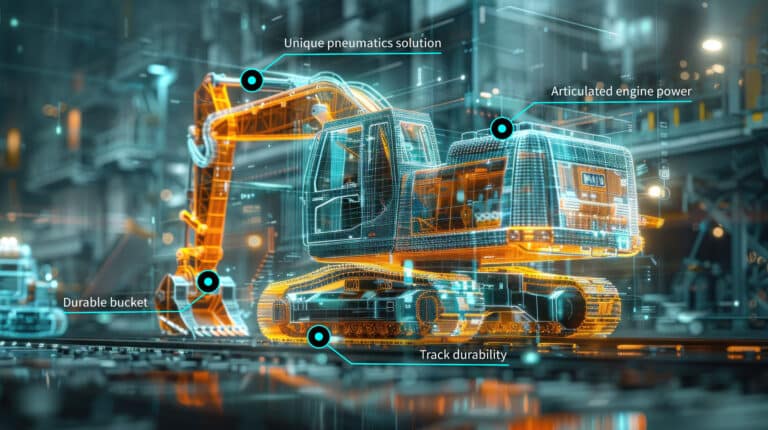Mixed Reality applications present a growing opportunity to increase efficiency and cut costs across a range of enterprise settings from design and manufacturing to training, maintenance and retail. This article focuses on Mixed Reality use cases across industrial and manufacturing settings and gives some useful tips on how to get started on a Mixed Reality training project.
What is Mixed Reality?
Mixed Reality as a broad concept refers to a continuum of experiences anywhere between the extremes of the real, physical world, and a fully virtual experience.
In a more limited sense, Mixed Reality (MR) refers to visualisations and environments where physical and digital objects co-exist and interact in real time, allowing users to experience digital elements as if they were a part of the real world. In enterprise settings, MR typically refers to this more limited concept of Mixed Reality.
Bridging the physical and the digital
In a Mixed Reality experience, digital elements appear three-dimensional to the user, and respond to user cues via gaze, voice, hand gestures or motion controllers. The digital elements can be fixed to a point in physical space, retaining their position, shape and scale even if the user moves around. This interactivity facilitates the creation of life-like simulations combining digital and physical objects, locations and people.
How does MR work in practice?
A user of a Mixed Reality application typically wears a see-through headset, which allows the viewing of and interaction with the digital elements overlaid with the physical space. As opposed to the closed-off virtual reality, the user is completely aware of the actual surroundings while interacting with the digital content. Another important advantage of MR devices is that they allow workers to perform tasks hands free with on-the-spot digital information displayed in their field of vision.
Whilst the Microsoft HoloLens is the leading MR ready headset, several alternative solutions exist. MR ready hardware includes helmets and hardhats that adhere to safety requirements at building sites and other hazardous environments.
Key benefits of MR for industry and enterprise
1. Improve employee performance
Replace lengthy paper manuals with real-time, interactive instruction received via a headset, combining digital graphics and remote support via video and audio to the on-site engineers and front-line staff. Save time and cost by using digital components over physical prototypes to test ideas, design and functionality.
2. Increase training efficiency and safety
Speed up the training of new staff significantly, facilitating remote support by experts or sharing the knowledge of retiring workers. MR also facilitates effective on-the-job training and safe training for hazardous situations.
3. Stay competitive
The ‘Industry 4.0’ transformation is underpinned by the adoption of digital technologies that help automate processes, optimise efficiency and reduce costs. Virtualisation is an integral part of the transformation, and industry leaders across sectors are adopting MR and other XR technologies to increase productivity, quality and safety.
Which industries can benefit from adopting MR?
With industries including aerospace, architecture, construction, design, energy, manufacturing, mining and retail already trialling and adopting MR applications, it is clear the field holds much promise.
The automotive industry in particular has been an early adopter of MR in their processes. The below examples highlight different ways in which MR can be applied to increase efficiencies and stay competitive.
- Improve engineering design processes
- Assist mechanics with repairs
- Help build cars faster
- Employee training and showrooms
- Improve showroom experience
MR is a powerful learning tool

A chance to integrate digital guidance in the real world makes MR especially useful in on-the-job training. Context-relevant digital information helps workers perform tasks, even if they have little formal training. And a remote expert can provide further assistance in the trainee’s field of vision. Working and learning simultaneously enables more rapid skill acquisition, and MR can even lower the skill requirements for new hires.
MR is also well suited for advance practice of tasks. Mixing together digital content and real-world views provides a visual, inspiring and interactive way to teach complex topics.
Training is more engaging and memorable. Multi-user MR enables training sessions where a “master” – like a retiring employee – guides “apprentices” through digital training content and participants can explore the content from various vantage points.
How to get started on MR training?
- Visit industry events or tech vendors’ and solution providers’ showrooms to personally test drive MR technologies and solutions. Seeing is believing, and it’s important to experience MR in action to understand its potential.
- Think about MR as an enhancement to – rather than a replacement for – your existing training solutions, as you have invested a lot of money and intellectual capital in them. It can also make financial sense to replace a traditional training module with an MR alternative. You may be able to save on travel and material costs or significantly speed up the learning process.
- Consult end users and other stakeholders to choose a use case. Do your employees feel they have learned certain tasks on the job through trial and error rather than in a separate training session? Do your workers need to train for dangerous situations that are expensive to replicate in the real world? Would the learning services you sell to your customers benefit from MR as a competitive differentiator?
- Start from a pilot to demonstrate technological feasibility, business viability and usability and desirability from the trainees’ point of view. Identify key performance indicators you will track to measure pilot results.
- If you are thinking of partnering rather than developing the solution internally, there is already an ecosystem of potential partners available. Choose a good partner who understands your needs and get started.

